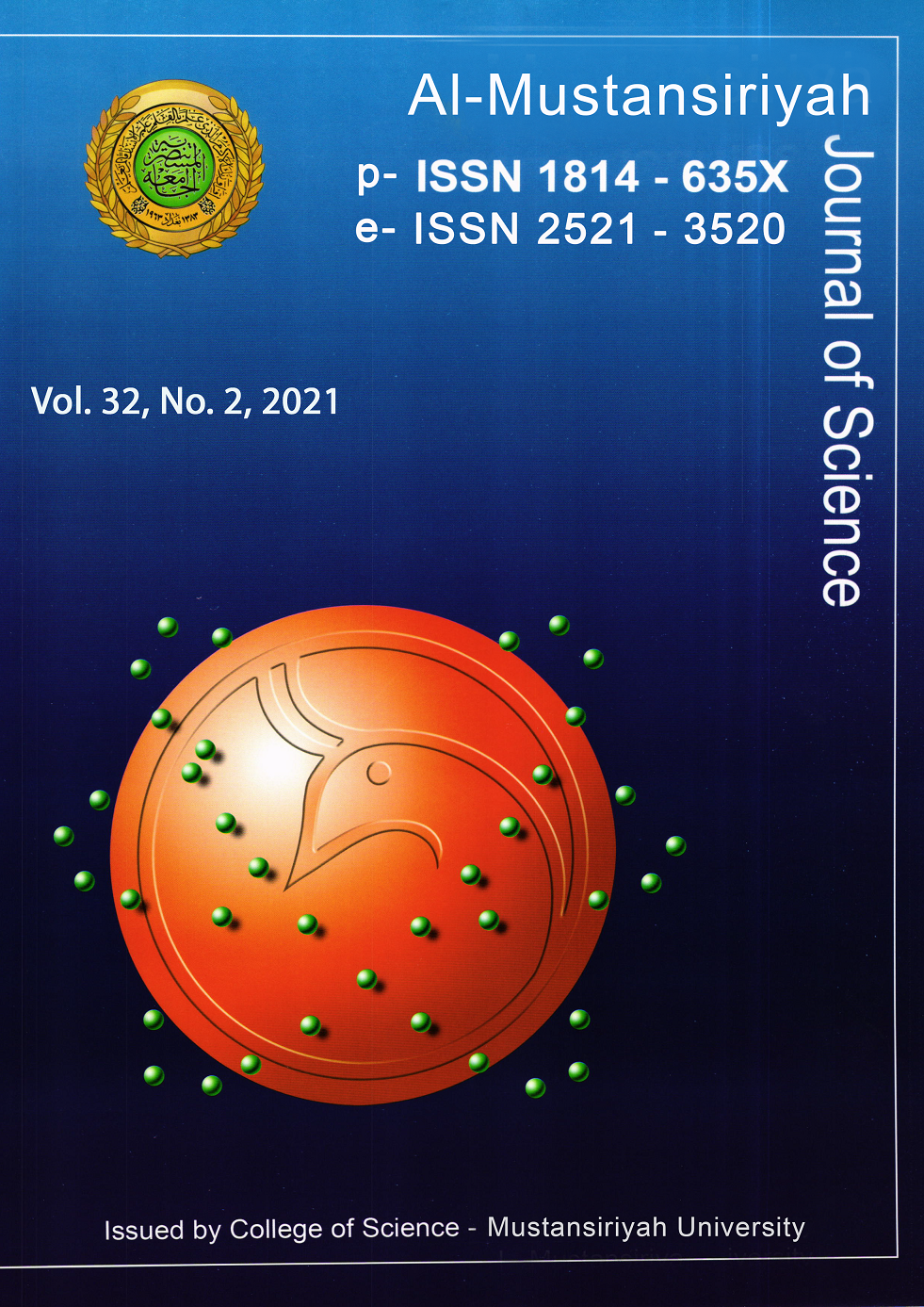The Relationship between Air Stability and Visibility over Baghdad City
DOI:
https://doi.org/10.23851/mjs.v32i2.988Keywords:
Baghdad, Stability Classes, Pasquill Stability, Visibility.Abstract
In this study, Pasquill atmospheric stability determined at daytime for January and July 2010 fixed for Baghdad city. The classification of stability was made using data of wind speed and solar radiation. These classes were compared with atmospheric stability recorded hourly in Baghdad airport station. The results show that stability class, B and C make up the highest percentages, while class A is non-existent during winter "this" can be attributed to prevailing parameter weather and their frequencies such as temperature, wind speed, and solar radiation. The stability classes were estimated to be medium to moderate. In summer, B and A-B stability classes were more predominant than others. Visibility in January month is very high and concentrated at 8500-11500 meters and has a rate of 75%, while the bad visibility range at this month is about 7.6%. In July month the rate of clear weather conditions of visibility is about 65.8%. Atmospheric elements (temperature, relative humidity wind speed, solar radiation) are compared with visibility at specified stability class to show it’s affected on visibility. If more stable conditions existed this refers to the better extent of visibility, this means unstable conditions reduce atmospheric visibility with help of atmospheric elements. Overall, the most affected class on the visibility is neutral condition and near-neutral condition, but you may determine the location if there is near to the location of emission pollutant or aerosols, consequently, the case is different.Downloads
References
D. H. Slade, Meteorology and atomic energy, Washington,U.S: Washington] U.S. Atomic Energy Commission, Division of Technical Information; [available from Clearinghouse for Federal Scientific and Technical Information, National Bureau of Standards, U.S. Dept. of Commerce, Springfield, Va, 1968.
J. Cui, J. Lang , T. Chen, S. Cheng, Z. Shen, S.Mao, Investigating the impacts of atmospheric diffusion conditions on source parameter identification based on optimized inverse modelling method, J. Atmos. Environ., vol. 205(15), pp. 19-29, 2019.
R. E. Luna, and H. W. Church, A Comparison of turbulence intensity and stability ratio measurements to Pasqual stability classes, J. Appl. Meteorol., vol. 11(4), pp. 663-669, 1972.
M. Mohan, T. A. Siddiqui, Analysis of various schemes for the estimation of atmospheric stability Classification, Atmos Environ., vol. 32 (21), pp. 3775-3781, 1998.
N. Ravshanov, and D. Akhmedov, Air Quality Dispersion modelling in spherical coordinates," in The 2nd International Conference on Advanced Technologies for Societal Applications, springer, 2018.
L. Xun, H. Lin, L. Jingyi, S. Zhihao, W. Yiyi, Z. Hongliang and et al., Source contributions to poor atmospheric visibility in China, Resour Conserv Recycl, vol. 143(1), no. 1, pp. 167-177, 2019.
K. W. Mui, L. T. Wong, L. Y. Chung, Mathematical models for accurate prediction of atmospheric visibility with particular reference to the seasonal and environmental patterns in Hong Kong, Environ. Monit Assess., vol. 158(333), pp. 1-4, 2008.
J. C. Trijonis, W. C. Malm, M. Pitchford, W. H. White, R. Charlson, Acidic deposition: State of science and technology. Report 24. Visibility: Existing and historical conditions-causes and effects., National Acid Precipitation Assessment Program., Wash.,UNITED STATES, 1990.
K. Y. Finnd, B. Lamb, M. Y. leclers, S. Lovejoy, Multifractional analysis of line source plume concentration in surface layer flows, J. Appl. Meteorol., vol. 40(2), pp. 229-245, 2019.
A. F. Hassoon, , S. K. Mohammed, H. H. H. Al-Saleem, , Atmospheric Stability and Its Effect on The Polluted Columns of Concentrations in North West of Baghdad City, Iraqi J. Sci., vol. 55(2), pp. 572-581, 2014.
A. F. Hassoon, Assessment of air pollution elements concentrations in Baghdad city from periods (May-December) 2010, International journal of energy and environment(IJEE) , vol. 6(2), pp. 191-200, 2015.
R. M. Shubbar, A. J. Suadi, M. H. Al-Jiboori, Study the Concentration of SO2 Emitted From Daura Refinery by Using Screen View Model., MJS, vol. 29(3 ICSSSA 2018 Conference Issue), pp. 7-15, 2018.
S. Magidi, Determining the atmospheric stability classes for Mazoe in Northern Zimbabwe, Int J Eng Res Appl., vol. 3(2): , pp. 178- 181., 2017; .
A. F. Hassoon, , K. R. Imad, A. M. Arkan, Population Growth and its Effect on Temperature Increase for Some Meteorological Stations in Iraq, J. Eng. Technol., vol. 31( 2):, pp. 25-39, 2013 .
F. Wang, S. D. Chambers, Z. Zhang, A. G. Williams, X. Deng, H. Zhang et. al., Quantifying stability influences on air pollution in Lanzhou, China, using a radon-based "stability monitor": Seasonality and extreme events., Atmos Environ, , vol. 145(1):, pp. 376-391., 2016; .
A. F. Hassoon, I.W. Braheem, Calculate visibility over Baghdad city depending on some atmospheric variability through 2012., Global J. Adv. Res., vol. 3(1): , pp. 12-23., 2016; .
D. Xue, C. Li, Q. Liu, Visibility characteristics and the impacts of air pollutants and meteorological conditions over Shanghai, China., Environ.Monit Assess. , Vols. 187(6), , p. 4581, 2015 .
CrossRef |
">PubMed
Downloads
Key Dates
Received
Accepted
Published
Issue
Section
License
Copyright (c) 2021 Al-Mustansiriyah Journal of Science

This work is licensed under a Creative Commons Attribution 4.0 International License.
(Starting May 5, 2024) Authors retain copyright and grant the journal right of first publication with the work simultaneously licensed under a Creative Commons Attribution (CC-BY) 4.0 License that allows others to share the work with an acknowledgement of the work’s authorship and initial publication in this journal.






















